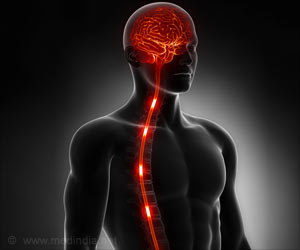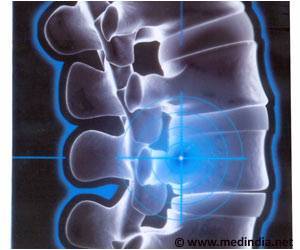Spinal-cord injuries block the flow of electrical signals from the brain to the rest of the body resulting in paralysis.

‘The implanted chip reads the spikes of electrical activity that are the instructions for moving the legs and send them to a nearby computer which sends instructions to an implant in the spine to electrically stimulate the appropriate nerves.’





It is a wound that rarely heals, but one potential solution is to use
technology to bypass the injury. In the study, a chip was implanted into the
part of the monkeys' brain that controls movement.The chip read the spikes of electrical activity that are the instructions for moving the legs and send them to a nearby computer. It deciphered the messages and sent instructions to an implant in the monkey's spine to electrically stimulate the appropriate nerves. The results published in the journal Nature, showed the monkeys regained some control of their paralysed leg within six days and could walk in a straight line on a treadmill.
Dr Gregoire Courtine, one of the researchers, said: "This is the first time that a neurotechnology has restored locomotion in primates. The movement was close to normal for the basic walking pattern, but so far we have not been able to test the ability to steer."
The technology used to stimulate the spinal cord is the same as that used in deep brain stimulation to treat Parkinson's disease, so it would not be a technological leap to doing the same tests in patients.
"But the way we walk is different to primates, we are bipedal and this requires more sophisticated ways to stimulate the muscle," said Dr Courtine.
Advertisement
Dr Mark Bacon, the director of research at the charity Spinal Research, said: "This is quite impressive work. Paralysed patients want to be able to regain real control, that is voluntary control of lost functions, like walking, and the use of implantable devices may be one way of achieving this.”
Advertisement















